Planning to fly with your four-footer riding in the cargo hold? Well, you’ll need a proper airline approved dog crate to keep your canine safely confined and comfy.
We’ll try to help by identifying three of the best airline-approved dog crates and sharing some of the things you’ll want to look for when making your choice. Let’s jump right in!
Continue reading for more in-depth reviews
Looking for an airline-approved pet carrier that can be placed beneath the seat in front of you? Check out our post detailing the best airline approved pet carriers (for in-cabin flying).
Airline Approved Dog Crates: Find an Awesome Travel Crate for Your Next Flight
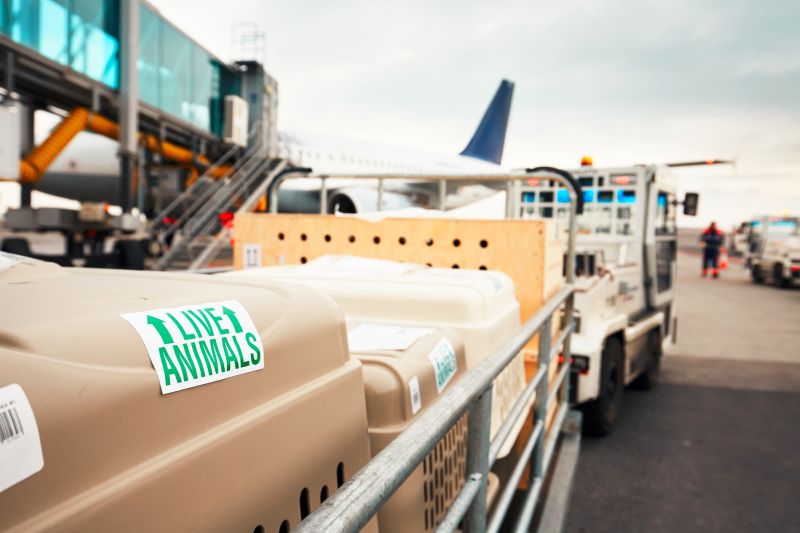
Heading to one of the best pet-friendly vacation spots? We’ve rounded up some of the best airline-approved dog crates on the market.
Just note that while we’ve done everything possible to select crates that’ll work for your next flight, it is always wise to call the airline ahead of time and verify that your chosen crate will be accepted.
1. Petmate Sky Kennel
An extremely well-built, easy-to-use crate that's available in several sizes up to 48 inches.
About: This heavy-duty Petmate Sky Kennel is a great choice for dog air travel, meeting all IATA airline requirements for cargo hold (with one minor exception).
Features:
- Recycled Materials. Made of 25% recycles materials.
- Pre-Drilled Zip Tie Holes. This is another huge benefit (which most crates do not have), as airlines require you to zip tie the kennel doors shut. We recommend these cable ties, as they are also quick release.
- Has Single Metal Door. The kennel door is made of one whole, single piece of metal, preventing a dog from potentially pulling the door inwards and collapsing it.
- Live Animal Stickers. Comes with live animal stickers to put on kennel.
- Approved by the USDA and IATA.
- Protruding Rim Handles. Extended handles/rims on the sides of the kennel meet airline requirements for rim spacing.
- Air Holes On All Four Sides. This crate has metal grates and air holes on all four sides of the kennel.
- Two Attachable Food and Water Dishes. This kennel contains two separate food and water dishes which can be clipped to the kennel door.
- Extra-Safe Lock. Most kennels use two pins that lock into the top and bottom of of the crate. This crate’s vault style locking mechanism uses four pins that insert into all four sides of the crate, making it super secure.
- Several Sizes. Comes in several different sizes (with measurement details) to ensure you’re buying the perfectly sized airline approved dog kennel for your pet.
Pros
- Meets nearly all IATA dog travel kennel requirements
- Both pieces fit inside one another for easy storage
- Included food bowls work well and provide added convenience
Cons
- You have to buy separate metal bolts in order to use this crate on a flight
- Some owners found the carrying handle flimsy
Many airlines require that all holes in pet carriers have a bolt, which may require you to purchase additional metal nuts and bolts to fill in the tie down holes. However, some airlines will let your leave tie down holes empty — just call the airline ahead of time to find out.
2. Petmate Vari Kennel
A high-quality travel carrier that's roomy enough for just about any doggo -- big or small.
About: The Petmate Vari Kennel is a crate carrier that will require some manual adjustments in order to be IATA compliant. However, it’s large size and solid materials still make in an option worth considering, especially for bigger dogs.
Features:
- Wire Windows. Wire windows on two side of the kennel allow for ventilation.
- Recycled Material. Made of 25% recycled material.
- Multiple Sizes. Available in different sizes for small and large dogs.
- Heavy-Duty Bolts. This kennel comes with metal bolts with plastic caps (which are airline compliant).
- Ventilation on all sides. Unlike the previous version, the new version has added rear ventilation.
- Roomy size. This carrier fits Great Danes and other large breeds .
- Includes holes for tie-down straps. To meet common flight requirements.
- Door with locking latch mechanism. Secure design for prolonged use.
- Made in the USA.
Pros
- Updated version provides ventilation on all four sides, per airline requirements
- One of the largest pet airline carriers available
- Made from heavy-duty recycled plastic
- Most owners raved about its quality
Cons
- No carrying handles included
- Some pet parents complained about the latching mechanism
3. Amazon Basics Two-Door Travel Carrier
About: Amazon Basics’ Kennel is a great choice for small breeds and ventilation on all sides for travel purposes. With an included handle and travel wheels, this kennel is super convenient for moving from one place to the next.
Features:
- 360 Ventilation. Excellent ventilation is provided on all carrier sides and the roof.
- Multiple models available. You can choose between top- and front-loading options, as well as plastic or metal vents (we’d recommend metal vents for maximum ventilation during air travel).
- Secure latch. Spring-loaded latch for extra security.
- Compact design. Perfectly-sized for pint-sized pups.
- Built-in handle. Makes it easier to carry through the airport.
- Distinct white and blue design. This makes the carrier easy to spot at a glance.
- Hardware included. All necessary screws included for extra security.
Pros
- One of the most affordable travel carriers available
- Provides plenty of ventilation
- Available in 3 different styles to meet your travel needs
Cons
- Wheeled models may not be suitable for all flights.
- Not as durable as some of the more expensive crates
Dog Travel Crate Requirements: Things You Need & Things to Avoid
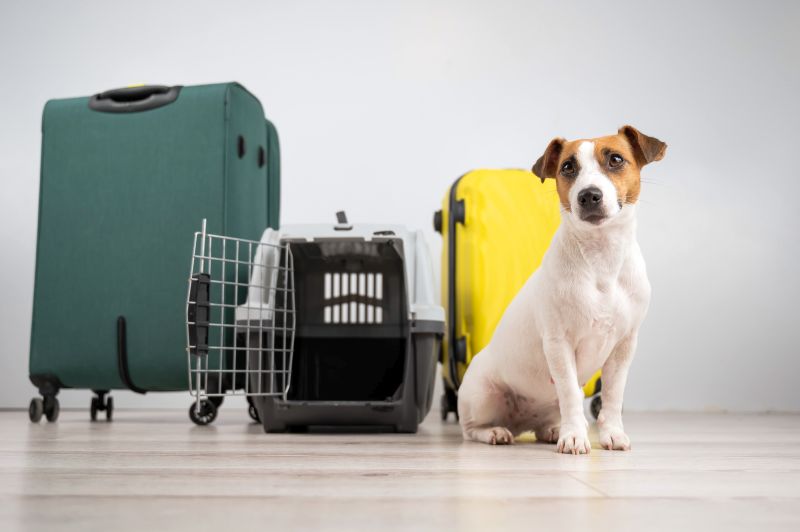
We’ll get started by explaining the features dog crates must possess to be suitable for flying in the cargo section of the airplane.
Just note that these rules apply for international flights as dictated by the International Air Travel Association (IATA). The requirements for domestic travel are typically slightly more relaxed, but to be safe, it’s best to follow the official international guidelines.
Features to Look for in an Airline-Approved Dog Crate
Here are some of the key elements to look for when picking your dog’s travel crate:
Sizing. Ample space is required for all air-travel crates, but the specifics vary based on your destination. For international travel (and most domestic flights), pet travel crates are required to be equal to your pet’s length, plus half of his leg, to provide plenty of room in front and back of your pet. An IATA-compliant dog crate must be tall enough so that the dog’s ears cannot touch the top of the kennel while they are standing. Pets must also be able to turn around and lie down comfortably while inside the crate.
Metal Nuts and Bolts. Some dog travel carriers will include plastic nuts and bolts for assembly, but metal nuts and bolts are required for all air travel. (Note: some pet crates come with metal bolts that have plastic caps – these are allowed).
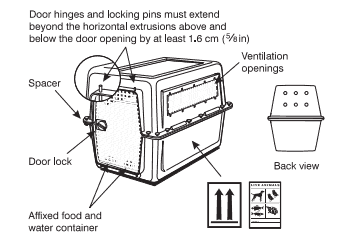
Single Metal Door. Many airlines (although not all) require that your pet crate features a travel kennel door designed as a single metal piece (rather than some models that have a plastic door that folds in the middle. Dogs can potentially pull these types of doors in, which can cause them to collapse, which illustrates the reason many flights require one whole metal door.
Additionally, while top-loading doors are often very convenient, most airlines prohibit crates with these kinds of entrances.
Food and Water Dishes. Airplane crates are required to have two separate food and water dishes attached to the crate door, rather than the sides. This is because the airlines must be able to have access to the dishes without opening the kennel door. This allows them to feed and water pets during the flight without opening the kennel door.
Document Info and Feeding Instructions. On your dog’s travel crate, include your pet’s important information – his name, any medications he takes, your phone number and address, plus your final destination, flight number, and the contact info of someone at your destination. Also attach your dog’s feeding and care instructions, plus a bag of food, to the top of the crate.
Kennel Doors Must Be Zip Tied Shut. Travel crate doors must be zip-tied shut to prevent doors from accidentally coming loose and opening during the flight.
Safety and Carrying Side Rim. Airlines require a spacing rim of at least 3/4-inches on all sides with ventilation openings. This is to prevent dogs from biting cargo handlers and allowing two cargo handlers to carry the kennel on each side.
Crate Lining. Dog travel crates must be lined with cushioning and an absorbent material for potential accidents during travel.
Live Animal Stickers. Airline kennels are required to have “live animal” stickers and “this way up” stickers on all sides. Many airlines will provide you with stickers – call ahead of time and make sure or bring your own.
Sufficient Ventilation. For international travel, air holes are required on all four sides, totaling at least half of each side wall of the dog travel crate. Domestic flights only require two ventilated sides or metal mesh panels (in addition to the door), but for optimal airflow and pet safety, we recommend kennels with air holes on all four sides.
For more info, read the complete IATA container requirement guidelines here.
Features to Avoid in an Airline-Approved Dog Crate
Crates designed for car travel or household use may have bonus features that, while helpful for most owners, will not be allowed for air travel. Make sure to avoid features listed below:
No Top Opening Doors. Kennels with top opening doors are not permitted.
No Plastic Front Doors or Latches. Travel dog crates cannot have plastic doors or plastic side latches securing the top and bottom of the kennel together without additional hardware (such as metal nuts and bolts).
Any Wheels Must Be Detachable. The crate must have wheels that are detachable or simply be made without wheels at all.
Cannot Be Made Of Unstable Materials. Your dog’s travel crate can not be made entirely of things like wicker or wire mesh, and it cannot be a soft-sided dog crate. Hard-sided crates are required, as soft-sided crates simply won’t provide adequate protection for riding in the cargo hold. So, look for crates made from metal or rigid plastic.
Travel Dog Crate Requirements for Specific Airlines: Airline Regulations for Flying Four-Footers
As mentioned, the specific travel dog crate requirements airlines impose often vary from one carrier to the next. To help you get ready for Fido’s flight, we’ve linked directly to the requirements of a few of the largest carriers below.
- United
- American Airlines
- Delta
- Alaska Airlines
- Virgin Atlantic
- US Airways (No pets allowed in the cargo hold! They only allow in-cabin travel for pets.)
- Jet Blue (No pets allowed in the cargo hold! They only allow in-cabin travel for pets.)
- Southwest (No pets allowed in the cargo hold! They only allow in-cabin travel for pets.)
More Pet Airline Travel Tips
Picking an airline-approved carrier for your pet is obviously important, but it isn’t the only thing to think about when preparing to fly with your floof. Try to keep the following tips and tricks in mind to enjoy a smooth flight with Fido!
Fly Direct. If at all possible book direct flights and avoid stopovers when traveling with your pooch. You don’t want to be keeping your dog in the cargo hold any longer than absolutely necessary.
Consider the Season and Time Of Day You’ll Be Flying. Keep the seasons in mind when traveling with your pet. In the summer months, fly in the early morning or evening, when temperatures will be more comfortable than mid-day. Conversely, in the winter, you want to try to fly mid-day to take advantage of the slightly warmer weather.
Research Your Airline. Be sure to call and talk with airline representatives to ensure you’re meeting the individual airline’s rules. Different airlines have different policies when it comes to traveling with your dog, and you don’t want to arrive at the airport, only to find that your crate doesn’t check out. Also call again 24 to 48 hours before your flight to reconfirm that you’ll be traveling with your pet.
If you can, we’d also recommend flying with one of the most pet-friendly airlines for flying with dogs, just to make sure you and your pooch are in the very best hands!
Be Extra Cautious When Flying With Short-Faced Dogs. Snub-nosed (brachycephalic) dogs have many respiratory issues, making air travel extremely dangerous for them (especially during lengthy trips). Most airlines won’t even allow snub-nosed dogs to fly at all, so you may need to consider getting your dog relocated with a private pet transport service.
Do Not Give Your Dog Drugs. Do not give your dog medications before the flight, if at all possible. Drugs can interfere with your pet’s cardiovascular system, altering how your pet’s body adjusts to high altitudes. They can also make your dog lose his balance and cause injury. Only administer medications to your pet if your vet recommends doing so before the flight.
Do Not Leash or Muzzle Your Dog. You don’t want to muzzle your dog for the flight, as it creates unnecessary stress and may even prevent him from breathing and regulating his body temperature correctly. Also don’t pack a leash inside the crate — it may entangle your pupper and cause an injury.
Do Some Pre-Flight Preparation. To ensure your dog has a good travel experience, you’ll want to help him get used to the travel crate prior to takeoff. Use the crate several times before the big day and make it a fun, positive experience. To simulate the airplane experience, have your dog get into the crate and then put him in a car and drive around. This will help your pet adapt to the sensations and movement he will experience during flight.
Watch Flight Attendants Zip Tie the Crate Shut. Some pet travelers like to watch the flight attendants as they zip tie the kennel door closed correctly. It’s just a good way to avoid potential problems.
Include One of Your Pet’s Favorite Toys. It’s usually a good idea to put one of your pet’s favorite toys in the dog travel crate to comfort him during the trip.
Before your flight, try to feed your dog 4 to 5 hours before the flight. Do not feed him right before the trip, as the stress and movement may upset his stomach.
Don’t hold back on water though – give your dog plenty of water so that he doesn’t get dehydrated. Also make sure to take your dog for a walk before putting him in his pet kennel and handing him over to the staff. This will help him relax and give him the chance to relieve himself before takeoff.
Frequently Asked Questions About Dog Cargo Crates for Flying
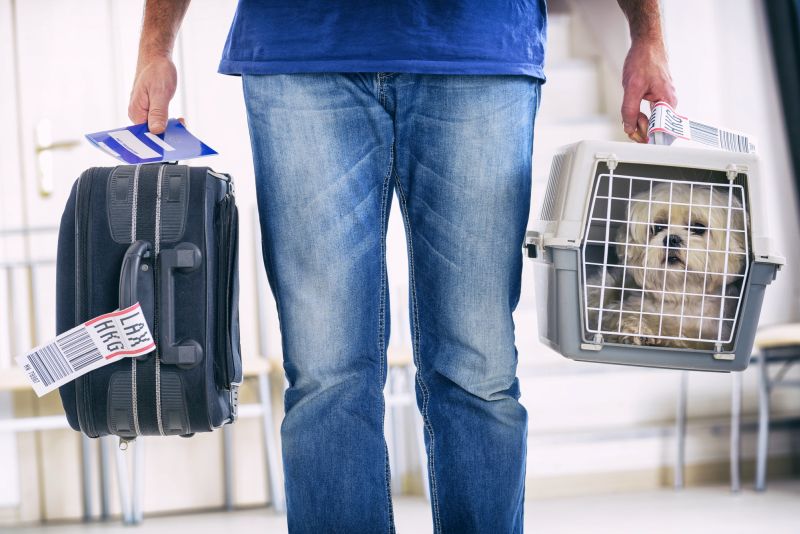
Still have questions about the best airline approved dog crates? We will try to help by answering some of the most common questions below!
Is it safe for dogs to fly in cargo?
Flying dogs in cargo is generally pretty safe. Airlines take many precautions to ensure your pet is kept safe and healthy during the flight, even when they’re in the cargo section of the airplane. The cargo area where live animals are kept is temperature controlled and appropriately maintained.
However, there are always some risks involved in flying a dog in cargo – especially if you have an older dog or a dog who has health issues. Due to the extra danger presented to brachycephalic breeds (such as pugs and bulldogs), these breeds are barred from flying altogether.
Which airlines fly dogs in cargo?
Very few airlines currently fly dogs in cargo. Many airlines stopped flying dogs in the cargo hold in recent years, and the ones that do have many breed restrictions. Of the major U.S. airlines, only Alaska Airlines, American Airlines, and Hawaiian Airlines fly dogs in the cargo hold.
United Airlines, Jet Blue, and Delta no longer allow dogs to fly in the cargo hold of the aircraft.
Many airlines stopped flying pets in the cargo due to COVID, and then simply never restarted the service again.
How much does it cost to fly a dog?
Flying a dog in the cabin of the aircraft usually costs between $100 to $300 per pet. Flying a pet in the cargo section of the plane can vary considerably depending on the size of the dog, ranging from $100 to $500.
How do service dogs fly on airlines?
Service dogs fly in the cabin section of the aircraft and sit at the feet of the owner, underneath the seat in front of them. They do not need to be in a crate or carrier, as they need to be able to perform emergency service tasks for their owner, if needed.
***
Do you have your own experience traveling with your pet on an airplane? Are you familiar with an airline-approved crate we didn’t discuss above? Have any helpful insight for meeting airline standards for travel crates? Share your tips and experiences in the comments section!
Want more ways to travel with your pooch? Check out our posts on the top dog bike baskets, dog backpack carriers, and dog car seats!
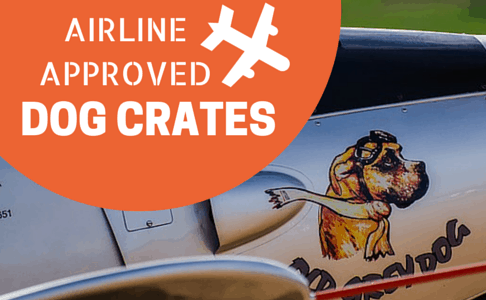
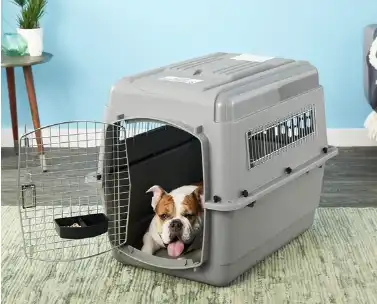
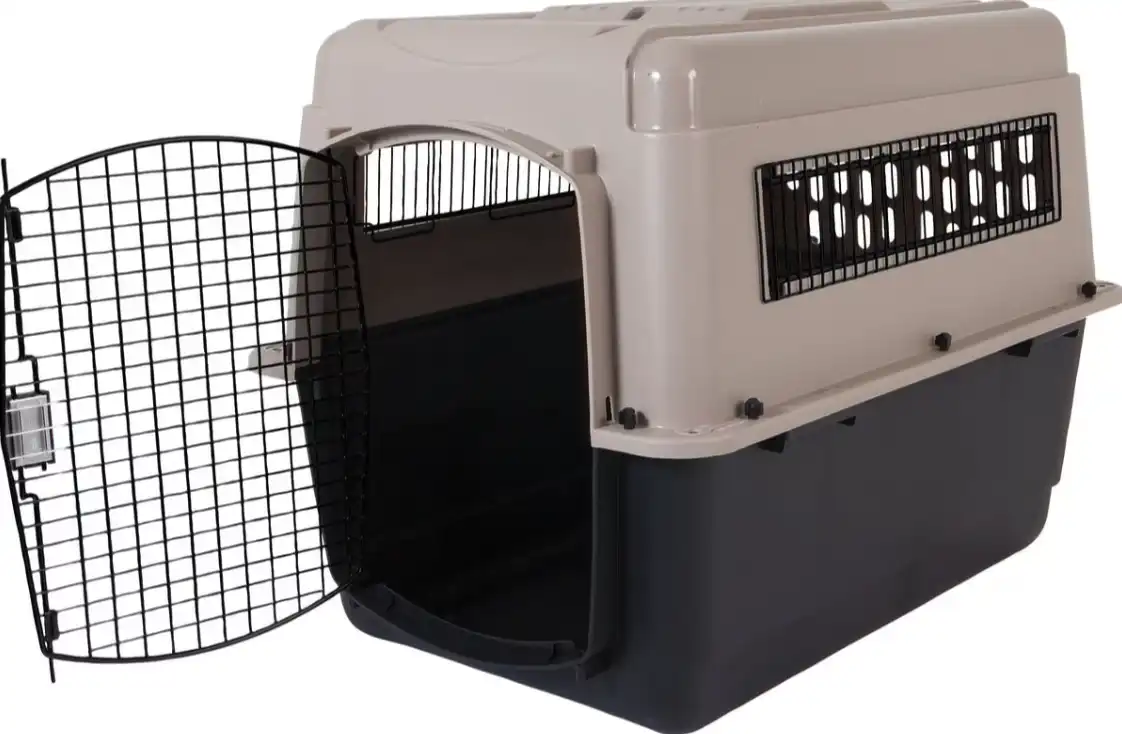
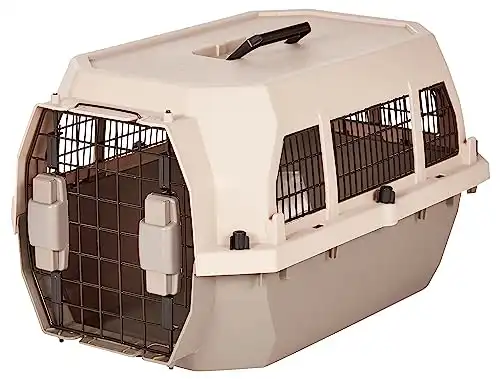

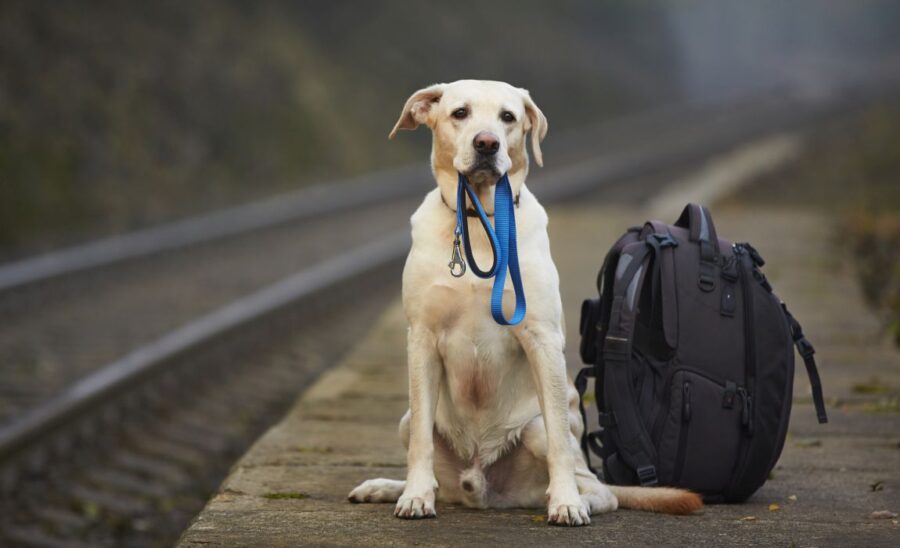


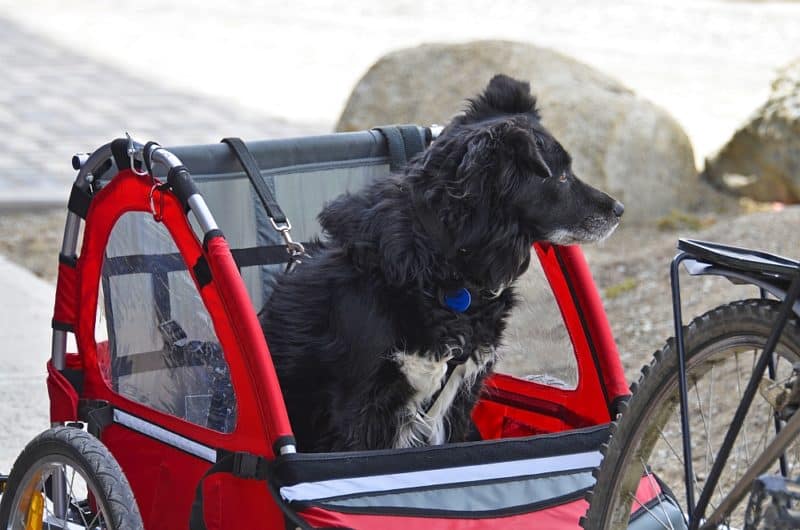
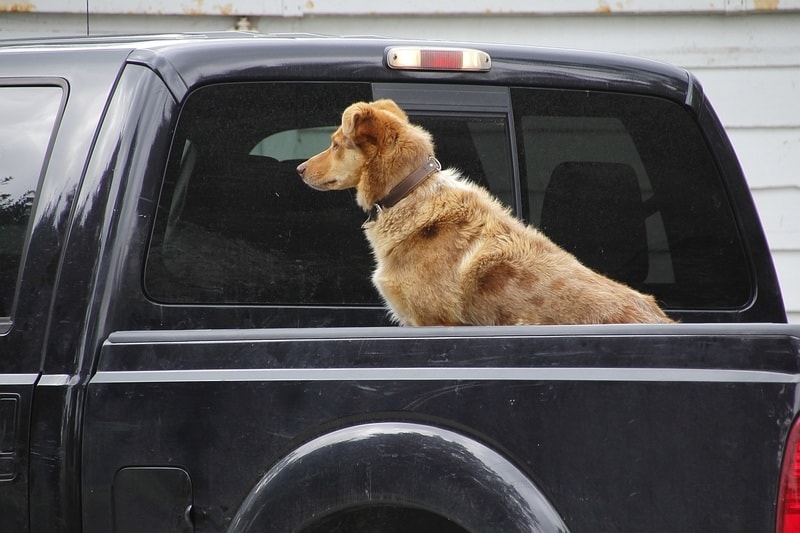
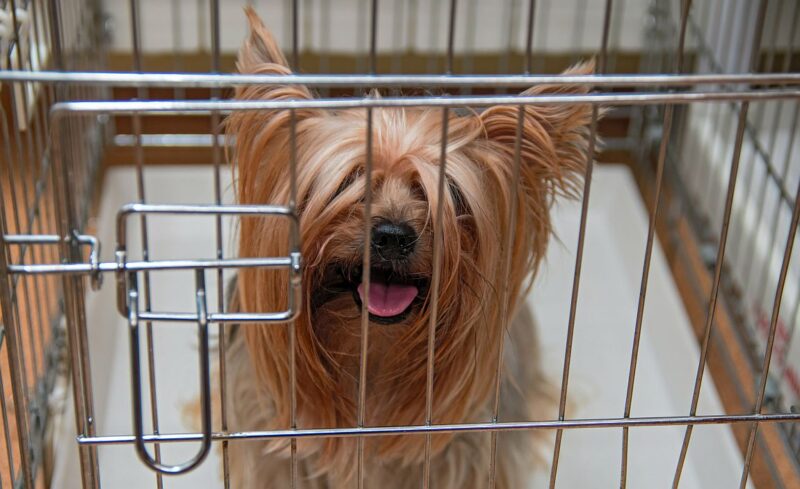
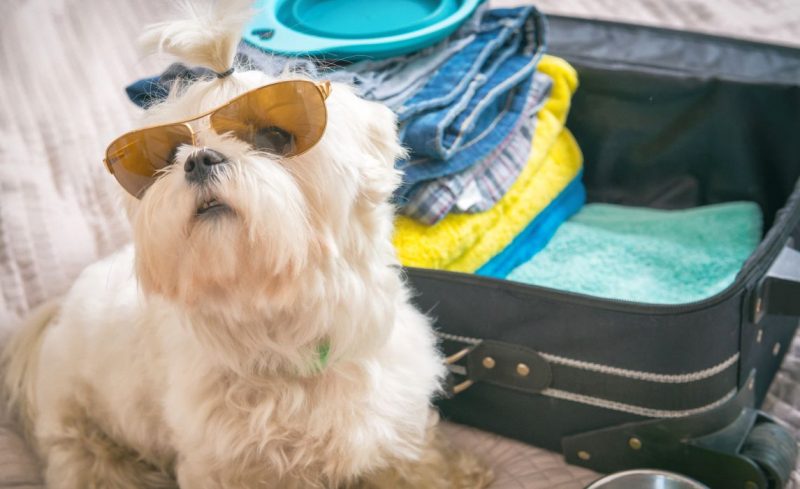

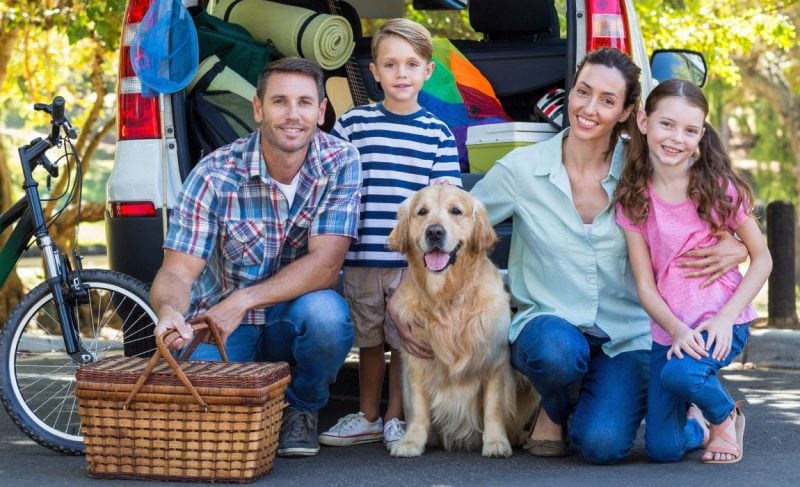
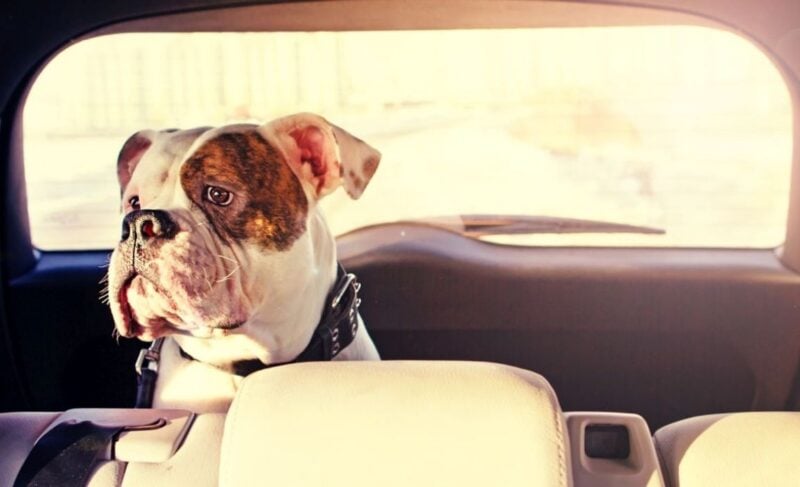

Leave a Comment